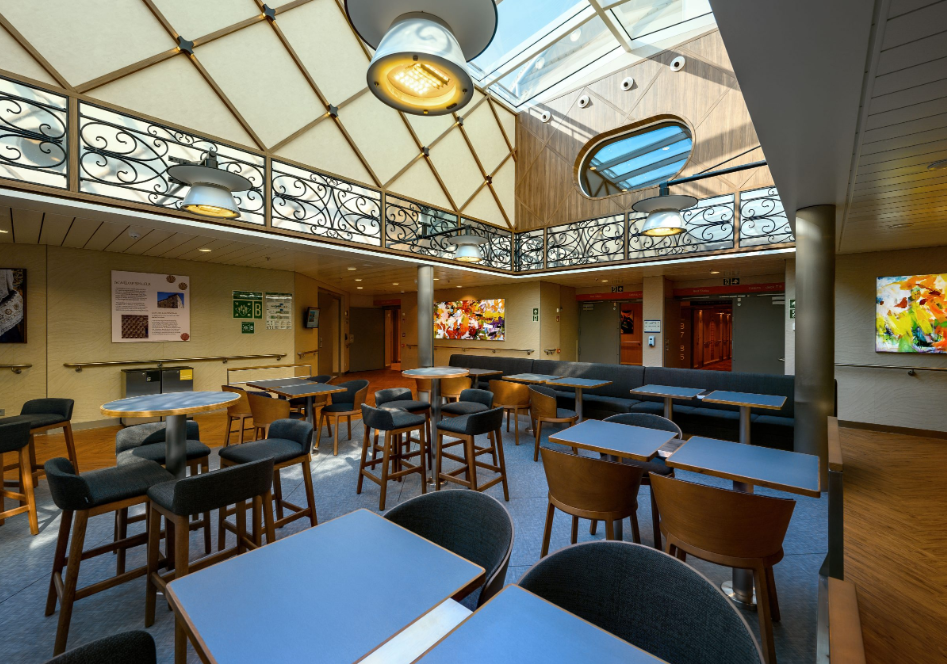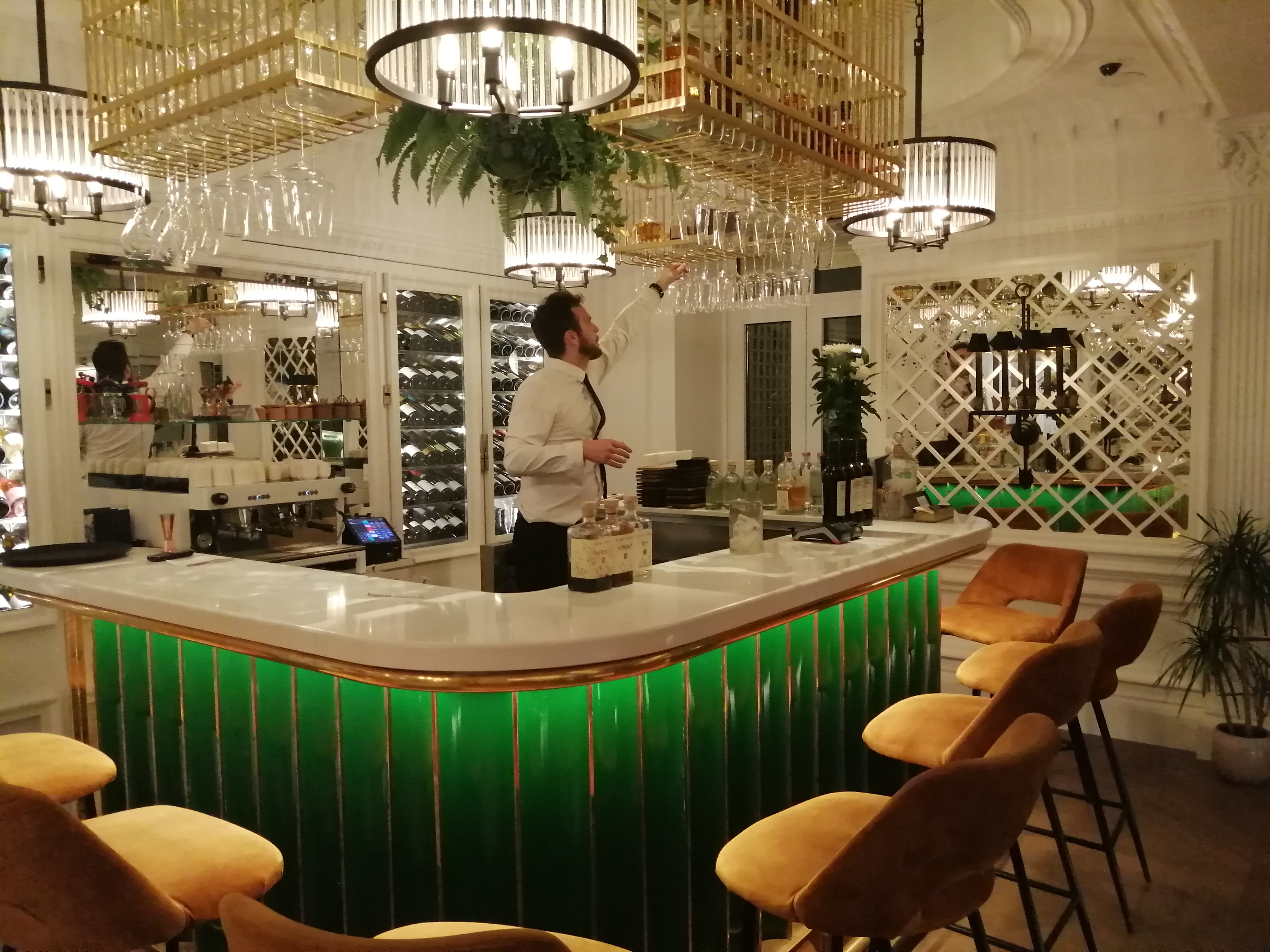The Independent's journalism is supported by our readers. When you purchase through links on our site, we may earn commission.
Why Spain makes for the perfect flight-free destination
Setting sail for Bilbao, stopping off in San Sebastian, catching a coach to Valencia and training to Barcelona – Helen Coffey makes the most of a multi-stop overland adventure


Your support helps us to tell the story
This election is still a dead heat, according to most polls. In a fight with such wafer-thin margins, we need reporters on the ground talking to the people Trump and Harris are courting. Your support allows us to keep sending journalists to the story.
The Independent is trusted by 27 million Americans from across the entire political spectrum every month. Unlike many other quality news outlets, we choose not to lock you out of our reporting and analysis with paywalls. But quality journalism must still be paid for.
Help us keep bring these critical stories to light. Your support makes all the difference.
“Why would you do that?”
It’s early on in my trip, as I’m standing in astonishment watching dolphins lithely bopping above the sparkling waves in front of Brittany Ferries’ new Salamanca vessel, that I think back to the words of my taxi driver and smile.
He was talking about my method of travel, wondering aloud why, as a woman of apparently sound mind, I would voluntarily opt to sail to northern Spain, a crossing of around 35 hours, rather than catch a two-hour flight. I had answered his questions as best I could on the swift drive from Portsmouth station to the ferry port, explaining that the climate crisis had forced me to reassess my travel choices and swap planes for trains, boats, coaches et al. But, by the time he dropped me off, he seemed no less perplexed.
“Have a good trip?” he said, his voice tilting up at the end in an invisible question mark as if he couldn’t quite believe such a thing possible. I remained unfazed by his incredulity – it was hardly the first time I’d seen such a reaction to ditching flying – but I wished he could see this, now: my fellow passengers and I all silently agog at the cetacean spectacle before us, viewed from the Salamanca ferry’s floor-to-ceiling windows.

I am a full-on ferry convert these days. I sleep like a log in my cabin, or “travelling hotel room” as I refer to it; I spend hours idly watching the seascape, dipping in and out of my book without the usual litany of distracting “pings” from messages and emails (my phone is, somewhat ironically, firmly in flight mode); I eat a proper meal on proper crockery in the onboard restaurant, alongside my chilled glass of Spanish white. For me, the holiday doesn’t start when I reach the city of Bilbao – it starts from the moment I set foot on the ship.
Of course, as enjoyable as the journey is, the destination is pretty spectacular too. Or destinations, plural, I should say. For another joyful element of slow travel is this: it forces you to get creative with the itinerary. After all, if you’re going to spend 35 hours traversing the ocean, you may as well see a bit more of the place than just your drop-off point. So it is that I find myself planning a multi-stop adventure, taking in five different towns and cities across two countries in 10 days.
In fact, Bilbao doesn’t even make the cut on this particular trip – I visited in September – as I hop straight on a bus bound for Zarautz, a laid-back surf town along the coast to the east. Here, I spend my days buried in a book on the beach while my partner catches waves under the blazing sun, before we duck into bars and restaurants for the duration of fleeting yet intense summer storms. We watch in awe as hailstones the size of golf balls rain down, but even that can’t distract us from the plates in front of us, piled with tender grilled polpo (octopus) and marinated artichoke hearts.
For me, the holiday doesn’t start when I reach the city of Bilbao – it starts from the moment I set foot on the ship
As much as Spain is all about food, northern Spain is really, really all about food. The different climate in the Basque region, with a much higher rainfall than the rest of Spain, producing landscapes cloaked in lush greenery, has its own distinct delicacies, alongside abundant, straight-from-the-waves seafood, courtesy of the Cantabrian Sea. We decide to sample more widely with the next stop on the tour: a night in culinary big-hitter San Sebastián.
A brief train ride east brings us to this coastal jewel, where the only thing to rival the cuisine scene is the honey-hued curve of the sandy Playa de la Concha beach. Saving the latter for later, we immediately embark upon a pintxos crawl in the sensationally pretty pedestrianised old town. We sit on stools in the sunshine, drinking litres of chilled sangria and hopping from restaurant to restaurant to order more of this Basque version of tapas: tuna-stuffed peppers; salted cod marinated in garlic and chilli, skewered onto crusty bread; manzanilla olives with juicy anchovies and pickled peppers; squid fried in the lightest of batters.

We retire to the bar at newish opening Hotel Villa Favorita, a beach-front boutique that’s perfected understated trendy chic, to linger over pisco sours amid suede booths, mustard barstools and emerald leaves from overspilling indoor planters. Then to bed, where a white marble bathroom, high ceilings, mirrored, Art Deco-style wardrobes and suede furnishings the colour of faded denim await.
The next day brings slightly less glamour in the form of an eight-hour coach ride – but, comparatively speaking, it’s a walk in the park for the slow traveller. I’ve always fancied visiting Valencia, and a direct air-conditioned Bilman Bus service gets me there by mid-afternoon. Bags dropped at the hotel, I head straight out for a tour of the old town, where sun-warmed 17th-century architecture sits in splendour alongside the Mercado Central, one of Europe’s biggest indoor fresh-food markets. It’s another city marked by its proximity to the sea and a love of eating, although here it’s all about the copious rice dishes found on menus all over town, the most famed, of course, being paella.
Thanks to the high-speed rail link, in just six hours I zip from the Catalan capital to the French one: Paris
I swiftly fall for Valencia’s unfussy, chilled-out energy, its affordable prices, its impressive 9km-long central park and relative dearth of tourists. I could move there tomorrow – but, instead, tomorrow I’ll be moving on. My final stop on the Spanish odyssey (courtesy of a 2hr 40m train north along the coast) is Barcelona. It’s my first time here, too – nothing short of miraculous, given that I’m a travel writer – and I have to adjust mentally to the sheer volume of tourists roaming La Rambla (and the sky-high prices of cheap-looking cocktails to match). But I’m a tourist myself, and it’s not long before I see what all the fuss is about. I explore the winding streets of the Gothic quarter, clamber up a tower in the still-to-be-completed masterpiece of the Sagrada Familia, sit and stare out across the city from the lofty heights of Park Güell and take an immersive tour of Gaudí’s otherworldly Batlló house. When in Rome/Barcelona…

And then it’s time for the final pre-home stop, this time an old favourite. Thanks to the high-speed rail link, in just six hours I zip from the Catalan capital to the French one: Paris. After my previous journeys, this feels like no time at all, and I’m soon settling in for a night at new, affordable digs Mama Shelter La Defense. Inspired by the hotel’s bombastic brand of colourful kitsch design – along with plentiful plug sockets and speedy wifi – I work from the lobby the following day, pausing only to grab a burger and fries from the space-themed American diner downstairs at lunch. The last leg of my voyage is an evening Eurostar train back to London, weighing in at a blink-and-you’ll-miss-it two hours and 17 minutes.
As I savour the leg room and top up my glass with a mini bottle of red wine courtesy of the onboard drinks trolley, I think again of my taxi driver’s words – “Why would you do that?” – and think to myself: “Well, why on earth wouldn’t you?”
Travel essentials
Getting there
Brittany Ferries operates crossings from Portsmouth and Plymouth to Bilbao and Santander in northern Spain. Travel with a car or bike, or as a foot passenger.
Staying there
Doubles at the Hotel Villa Favorita in San Sebastian from £144.
Doubles at the Hotel Dimar in Valencia from £70.
Doubles at the InterContinental Barcelona from £198.
Doubles at Mama Shelter La Defense in Paris from £95.
Getting around
Helen Coffey used an Interrail pass for trains in Spain and France; from €170 for a week-long adult pass for Spain.
Join our commenting forum
Join thought-provoking conversations, follow other Independent readers and see their replies
Comments